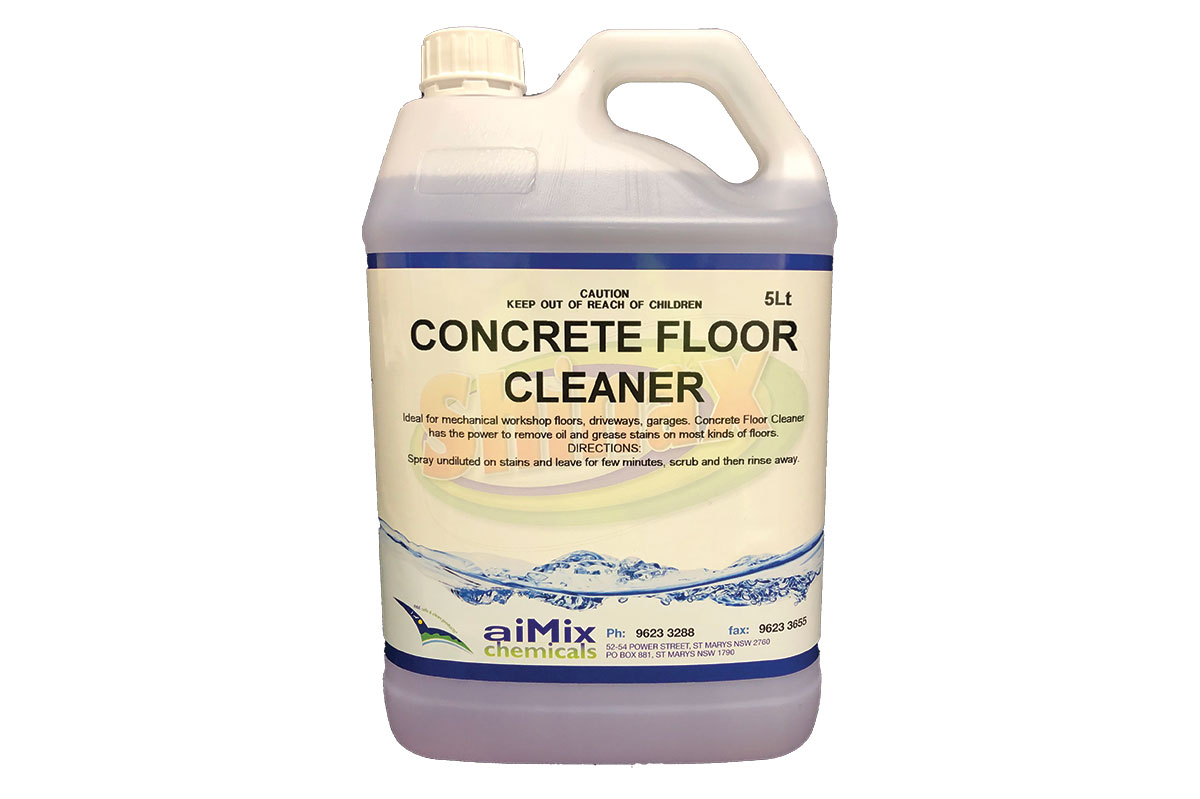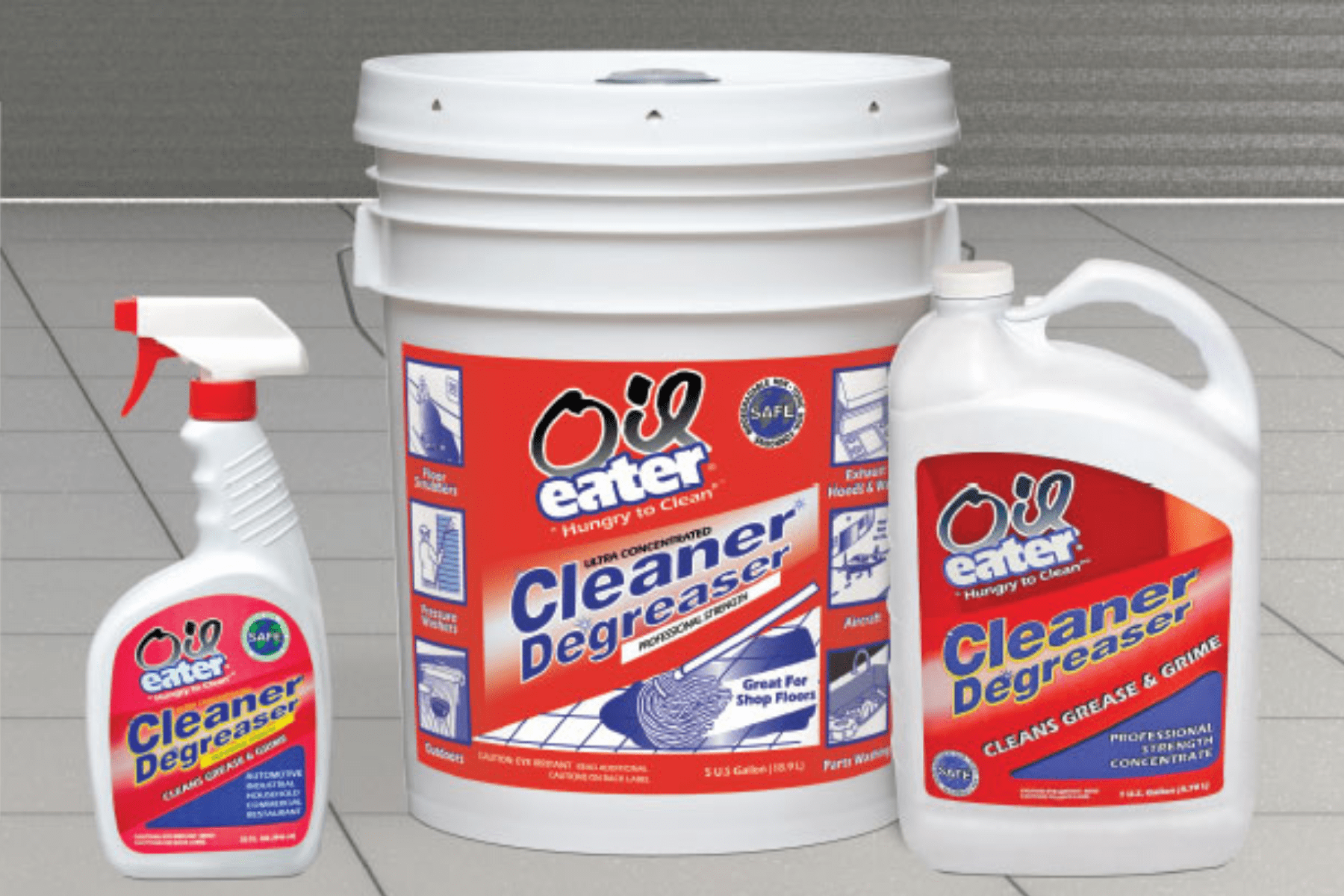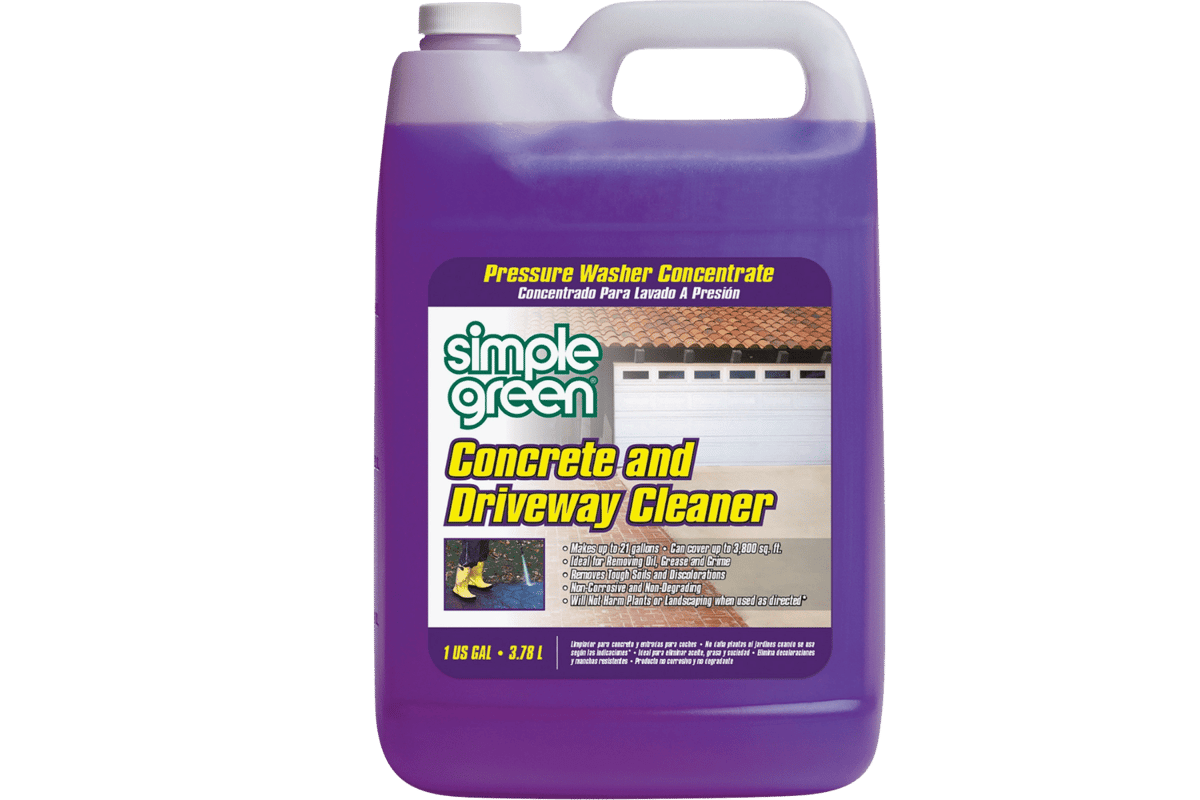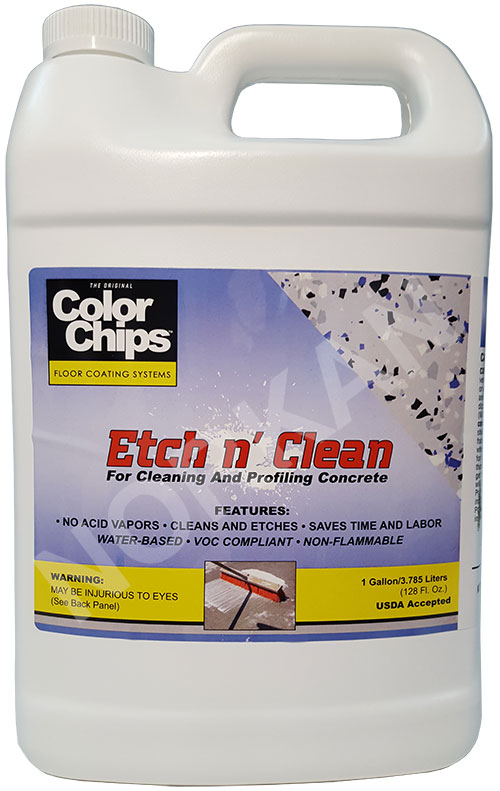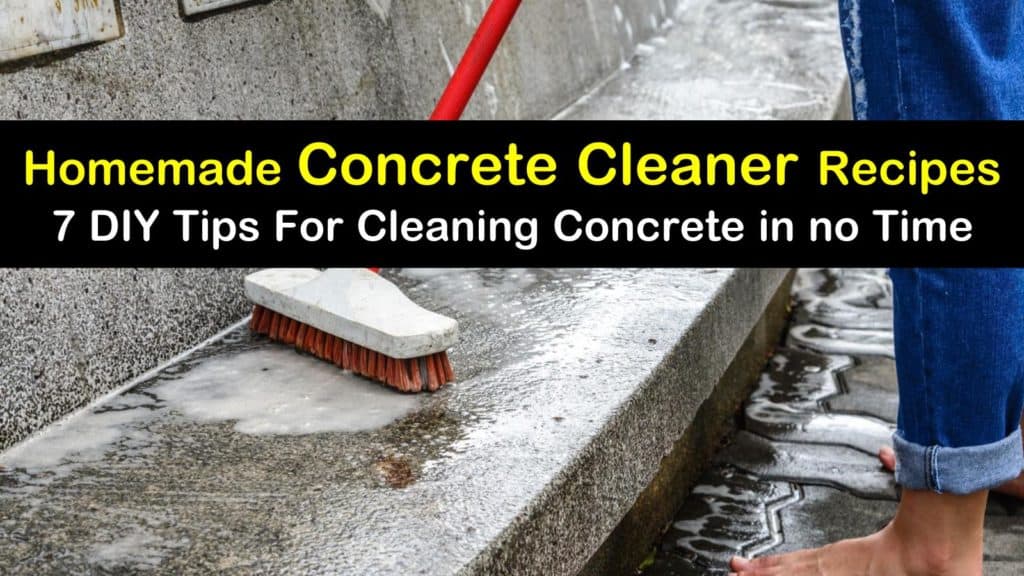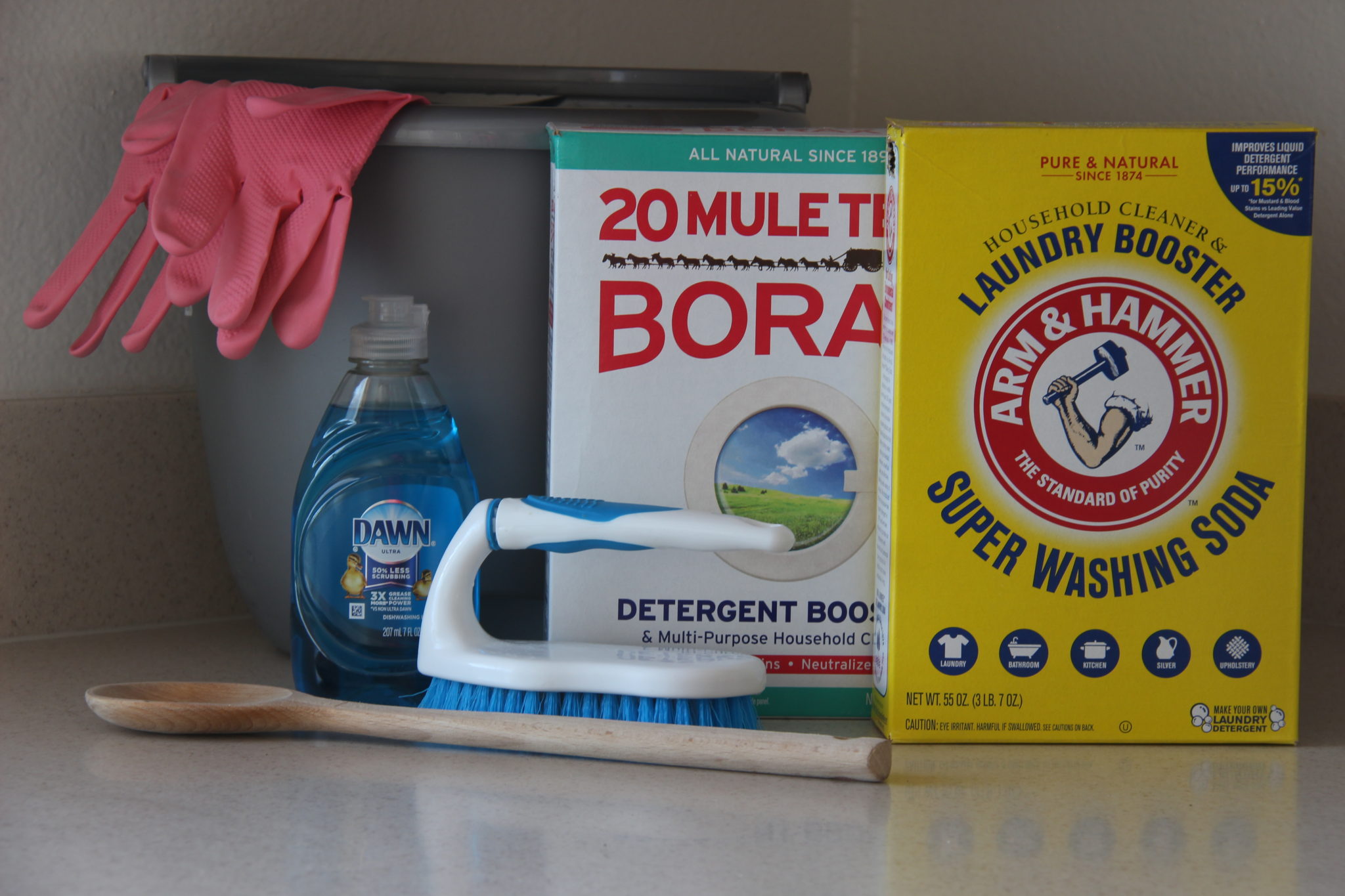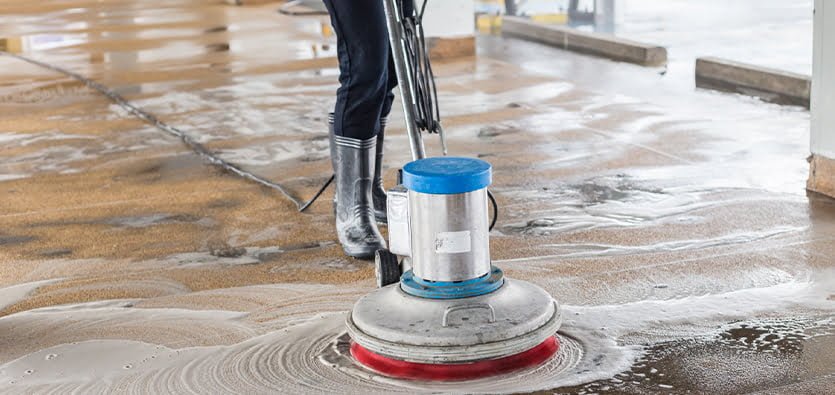Concrete floors are popular in both residential and commercial settings due to their durability, versatility, and modern aesthetic appeal. However, maintaining their appearance and functionality requires proper cleaning solutions and techniques. This comprehensive guide explores the best concrete floor cleaning solutions, effective cleaning methods, maintenance tips, and eco-friendly options. Additionally, it will address common mistakes to avoid and provide answers to frequently asked questions about concrete floor cleaning.
Best Cleaning Solutions for Concrete Floors
Commercial Concrete Cleaners
Commercial concrete cleaners are specially formulated to tackle the unique challenges of cleaning concrete surfaces. These products are designed to remove dirt, grime, stains, and even mold or mildew that can accumulate over time. They come in various types, including acidic, alkaline, and pH-neutral cleaners, each suited for different cleaning needs.
Acidic cleaners are effective for removing tough stains, rust, and mineral deposits. However, they should be used with caution, as they can etch or damage the concrete if not used properly. Always follow the manufacturer’s instructions and wear protective gear when handling acidic cleaners.
Alkaline cleaners, on the other hand, are excellent for removing grease, oil, and other organic stains. They are generally safer to use than acidic cleaners and are less likely to damage the concrete surface. These cleaners are often used in commercial garages, warehouses, and other areas where oil and grease stains are common.
pH-neutral cleaners are the safest option for regular maintenance cleaning of concrete floors. They are gentle on the surface yet effective in removing everyday dirt and grime. pH-neutral cleaners are ideal for polished or sealed concrete floors, where maintaining the finish is crucial.
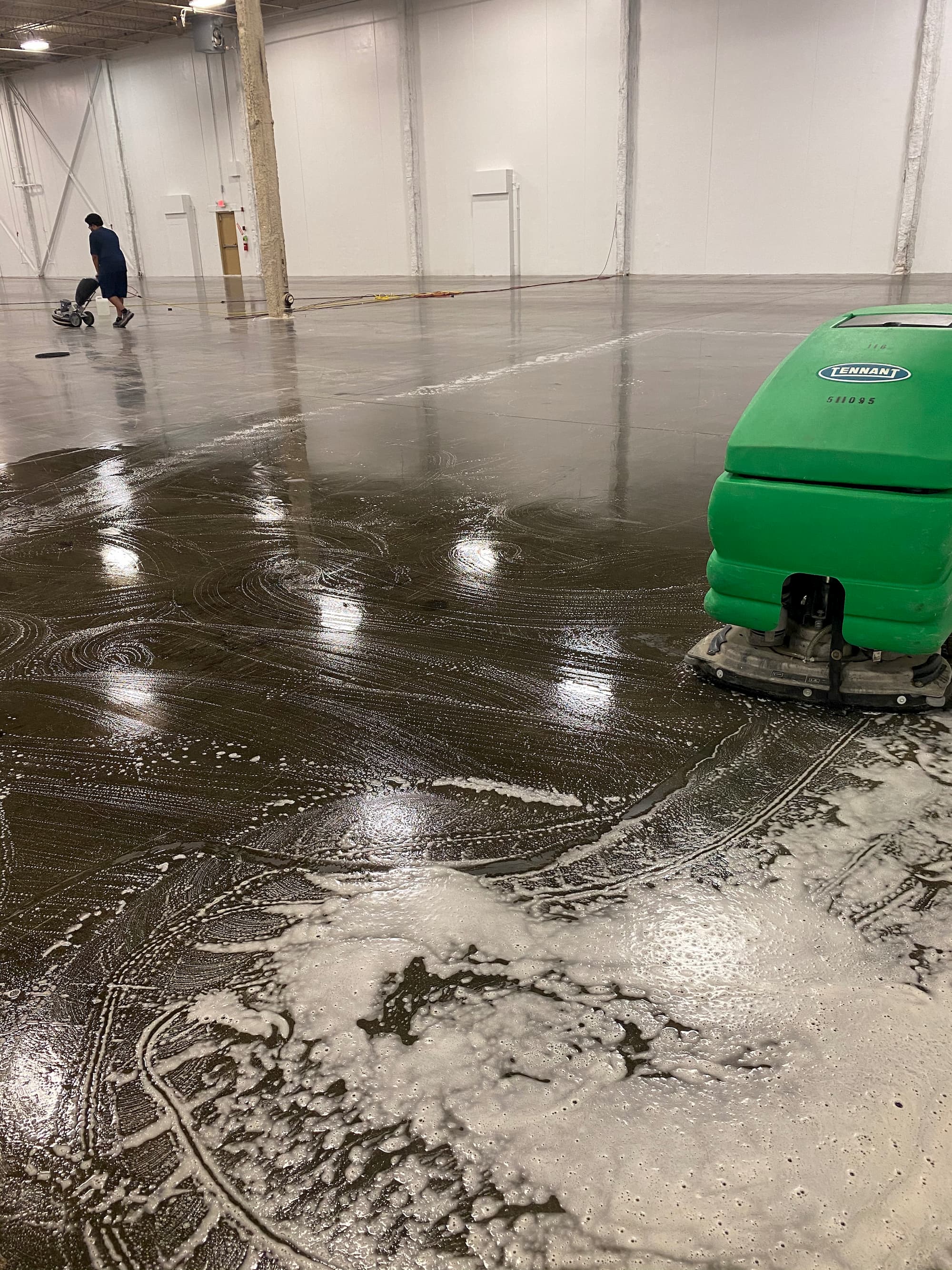
Homemade Cleaning Solutions
Homemade cleaning solutions can be an effective and economical alternative to commercial products. Common household items such as baking soda, vinegar, and dish soap can be combined to create powerful cleaning solutions. These ingredients are generally safe for both the user and the environment.
A simple yet effective homemade solution for cleaning concrete floors involves mixing equal parts of water and vinegar. This solution is excellent for removing light stains and general dirt. For tougher stains, you can create a paste using baking soda and water, applying it directly to the stain and scrubbing with a brush.
For greasy or oily stains, a mixture of dish soap and water can be highly effective. Apply the soapy solution to the stained area, let it sit for a few minutes, and then scrub with a stiff brush. Rinse the area thoroughly with clean water to remove any soap residue.
When using homemade solutions, it’s important to test a small, inconspicuous area first to ensure that the solution does not damage or discolor the concrete. This precaution is particularly important for colored or stained concrete floors.
Eco-Friendly Cleaning Products
Eco-friendly cleaning products are becoming increasingly popular as more people seek sustainable and non-toxic cleaning options. These products are formulated with natural ingredients that are biodegradable and free from harmful chemicals, making them safe for both the environment and indoor air quality.
Many eco-friendly concrete cleaners are based on plant-derived surfactants and natural solvents. They are effective in removing dirt, grime, and stains without causing harm to the concrete surface. Additionally, these cleaners often come in recyclable packaging, further reducing their environmental impact.
When selecting eco-friendly cleaning products, look for certifications such as Green Seal or EcoLogo, which indicate that the product meets stringent environmental standards. These certifications can assure that the product is genuinely eco-friendly and effective.
Using eco-friendly cleaning products not only helps protect the environment but also ensures a healthier living or working space, free from toxic fumes and residues. They are particularly beneficial in homes with children, pets, or individuals with allergies or sensitivities to chemicals.
Specialized Stain Removers
Specialized stain removers are designed to target specific types of stains that may not respond well to general cleaners. These products are formulated to break down and remove stubborn stains such as rust, oil, grease, paint, and mildew without damaging the concrete surface.
Rust stains, for example, can be particularly challenging to remove. Specialized rust removers contain ingredients that dissolve the rust without etching the concrete. Similarly, oil and grease stain removers often contain degreasers that penetrate and lift the stains from the porous concrete.
For mildew and mold stains, look for products that contain fungicides or mildewcides. These cleaners not only remove the stains but also help prevent the regrowth of mold and mildew, which is crucial in damp environments such as basements or outdoor patios.
When using specialized stain removers, it’s essential to follow the manufacturer’s instructions carefully. Some products may require multiple applications or specific application methods to achieve the best results. Additionally, always wear appropriate protective gear, such as gloves and eye protection, to ensure safety during use.
Effective Cleaning Methods for Concrete Floors
Regular Sweeping and Dusting
Regular sweeping and dusting are fundamental steps in maintaining clean concrete floors. Dust, dirt, and debris can accumulate on the surface, making the floor look dull and potentially causing scratches or damage over time. Using a soft-bristle broom or a dust mop is effective in removing loose dirt and debris without scratching the concrete.
For indoor concrete floors, a microfiber dust mop is an excellent tool. Microfiber is highly effective in trapping dust and dirt, and it can be used dry or slightly dampened for better results. Regular sweeping should be done at least once a week, or more frequently in high-traffic areas.
For outdoor concrete surfaces, a stiff-bristle broom is more suitable. Sweep the area thoroughly to remove leaves, dirt, and other debris. For large outdoor spaces, a leaf blower can also be used to quickly clear loose debris.
In addition to regular sweeping, periodic vacuuming can help remove fine dust and dirt particles that a broom or dust mop might miss. Use a vacuum cleaner with a brush attachment for the best results, and avoid using vacuum cleaners with metal or hard plastic attachments that can scratch the concrete surface.
Wet Mopping and Scrubbing
Wet mopping is essential for deep cleaning concrete floors and removing stubborn dirt and grime. Before wet mopping, always sweep or vacuum the floor to remove loose debris. Use a mop with a bucket and a mild cleaning solution appropriate for your specific type of concrete floor.
For sealed or polished concrete floors, use a pH-neutral cleaner mixed with water. Avoid using acidic or alkaline cleaners that can damage the finish. Dip the mop in the cleaning solution, wring it out thoroughly, and mop the floor in sections, ensuring even coverage.
For unsealed concrete floors, a more robust cleaning solution may be required, especially for heavily soiled areas. An alkaline cleaner or a mixture of dish soap and water can be effective. Apply the cleaning solution to the floor, let it sit for a few minutes to loosen dirt and stains, and then scrub with a stiff-bristle brush or a floor scrubber.
After mopping or scrubbing, rinse the floor thoroughly with clean water to remove any cleaning solution residue. Use a wet vacuum or a dry mop to remove excess water and speed up the drying process. Ensure the floor is completely dry before allowing foot traffic to prevent slipping and further soiling.
Pressure Washing
Pressure washing is a powerful method for cleaning outdoor concrete surfaces, such as driveways, patios, and walkways. It is highly effective in removing deep-seated dirt, stains, mold, mildew, and algae. However, it should be used with caution, as excessive pressure can damage the concrete surface.
Before pressure washing, clear the area of any loose debris and objects. Set the pressure washer to a medium setting, typically between 2,500 and 3,000 psi, and use a fan or rotating nozzle for even cleaning. Hold the nozzle at a slight angle and maintain a consistent distance from the surface to avoid etching the concrete.
Apply a concrete cleaner or degreaser to heavily soiled areas, and let it sit for a few minutes to break down dirt and stains. Use the pressure washer to rinse off the cleaner, starting from the highest point and working your way down to prevent streaking.
For best results, move the nozzle in a sweeping motion, overlapping each pass to ensure even cleaning. Avoid holding the nozzle in one spot for too long, as this can create uneven patches or damage the surface. After pressure washing, allow the concrete to dry completely before sealing or applying any protective coatings.
Sealing and Polishing
Sealing and polishing concrete floors can enhance their appearance and provide additional protection against stains, moisture, and wear. Sealed and polished concrete floors are easier to clean and maintain, as the smooth surface prevents dirt and stains from penetrating the concrete.
Before sealing or polishing, ensure the floor is thoroughly cleaned and completely dry. Apply a concrete sealer according to the manufacturer’s instructions, using a roller or sprayer for even coverage. Allow the sealer to dry for the recommended time, and apply additional coats if necessary.
Polishing concrete floors involves using a floor polishing machine with diamond-impregnated pads to gradually grind and polish the surface to the desired level of shine. Polished concrete floors have a high-gloss finish that enhances their appearance and makes them more resistant to stains and scratches.
Regular maintenance of sealed and polished concrete floors involves sweeping, dusting, and occasional wet mopping with a pH-neutral cleaner. Avoid using harsh chemicals or abrasive tools that can damage the finish. Periodically reapply sealer or polish as needed to maintain the floor’s appearance and protection.
Maintenance Tips for Concrete Floors
Regular Cleaning Routine
Establishing a regular cleaning routine is essential for maintaining the appearance and longevity of concrete floors. Regular sweeping or vacuuming helps remove loose dirt and debris that can cause scratches and wear over time. Wet mopping with a mild cleaner should be done weekly or as needed to remove stains and grime.
For high-traffic areas, more frequent cleaning may be necessary to prevent dirt buildup and maintain a clean appearance. Use entrance mats or rugs to reduce the amount of dirt and moisture tracked onto the concrete floor, and clean these mats regularly.
Implementing a consistent cleaning schedule not only keeps the floor looking its best but also helps identify and address potential issues, such as stains or damage before they become more significant problems.
Protecting the Floor Surface
Protecting the surface of concrete floors is crucial to prevent damage and extend their lifespan. Use furniture pads or coasters under heavy furniture and appliances to prevent scratches and dents. Avoid dragging heavy objects across the floor, as this can cause surface damage.
In areas prone to spills, such as kitchens and bathrooms, use rugs or mats to catch liquids and prevent stains. Choose mats with non-slip backing to prevent accidents and ensure they are made of materials that won’t trap moisture against the concrete.
For outdoor concrete surfaces, applying a protective sealer can help prevent damage from weather, stains, and UV exposure. Reseal outdoor concrete every 1-2 years or as needed to maintain its protective barrier.
Addressing Stains Promptly
Addressing stains promptly is essential to prevent them from becoming permanent or causing further damage. For liquid spills, blot the area with a clean cloth to absorb as much of the liquid as possible. Avoid rubbing, as this can spread the stain and push it deeper into the concrete.
For stubborn stains, use a cleaning solution appropriate for the type of stain and concrete surface. Apply the solution, let it sit for a few minutes, and scrub it with a brush. Rinse the area thoroughly with clean water and dry with a cloth or wet vacuum.
Regularly inspect the concrete floor for signs of stains or damage, and address any issues promptly to prevent them from worsening. Keeping the floor clean and protected can help minimize the occurrence of stains and maintain its appearance.
Periodic Deep Cleaning
Periodic deep cleaning is necessary to remove deep-seated dirt, grime, and stains that regular cleaning may not address. Schedule deep cleaning every few months or as needed, depending on the level of traffic and dirt accumulation.
Deep cleaning methods can include pressure washing for outdoor surfaces or using a floor scrubber with a suitable cleaning solution for indoor floors. Follow up with rinsing and thorough drying to ensure no cleaning residue remains.
After deep cleaning, consider applying a sealer or polish to enhance the floor’s appearance and provide additional protection. Regular deep cleaning, combined with routine maintenance, can help keep concrete floors looking their best and extend their lifespan.
Common Mistakes to Avoid
Using Harsh Chemicals
Using harsh chemicals on concrete floors can cause damage and discoloration. Avoid using bleach, ammonia, or acidic cleaners unless specifically designed for concrete. Always follow the manufacturer’s instructions and test a small area before full application.
Ignoring Stains
Ignoring stains can lead to permanent damage and make them harder to remove. Address spills and stains promptly to prevent them from settling into the concrete. Regularly inspect the floor and clean any stains immediately.
Overwetting the Floor
Overwetting the floor during cleaning can lead to moisture damage, especially for unsealed concrete. Use a damp mop rather than soaking the floor and ensure thorough drying after cleaning. Excess moisture can also promote mold and mildew growth.
Skipping Regular Maintenance
Skipping regular maintenance can result in dirt buildup, stains, and surface damage. Establish a consistent cleaning routine, including regular sweeping, mopping, and periodic deep cleaning, to keep the floor in good condition.
What is the best way to clean concrete floors?
The best way to clean concrete floors involves regular sweeping or vacuuming to remove loose dirt, followed by wet mopping with a pH-neutral cleaner. For stubborn stains, use a suitable stain remover and scrub with a brush. For outdoor concrete, pressure washing can be effective. Regular maintenance, including sealing and polishing, helps keep the floor in good condition.
Can I use vinegar to clean concrete floors?
Yes, vinegar can be used to clean concrete floors, particularly for light stains and general dirt. Mix equal parts of water and vinegar, apply to the floor, and mop as usual. However, avoid using vinegar on polished or sealed concrete, as its acidity can damage the finish. Always test a small area first to ensure it doesn’t cause discoloration or damage.
How often should I seal my concrete floor?
The frequency of sealing a concrete floor depends on the type of sealer used and the level of traffic. Generally, indoor concrete floors should be sealed every 2-3 years, while outdoor concrete may need sealing every 1-2 years. High-traffic areas or floors exposed to harsh conditions may require more frequent sealing. Follow the manufacturer’s recommendations for the best results.
What is the best cleaner for oil stains on concrete?
The best cleaner for oil stains on concrete is an alkaline degreaser. Apply the degreaser to the stained area, let it sit for the recommended time, and then scrub with a stiff-bristle brush. Rinse thoroughly with water and repeat if necessary. For severe stains, specialized oil stain removers or poultices may be required.
Are eco-friendly cleaning products effective for concrete floors?
Yes, eco-friendly cleaning products can be effective for cleaning concrete floors. Many eco-friendly products are formulated with natural ingredients that are safe for the environment and effective in removing dirt, grime, and stains. Look for products with certifications such as Green Seal or EcoLogo to ensure they meet environmental standards. Eco-friendly cleaners are particularly beneficial for maintaining indoor air quality and reducing chemical exposure.
The Importance Of Cleaning Concrete Floors Using Cleaners Sunrise Industrial Cleaners
Related Posts:
- Interior Concrete Floor Paint Ideas
- Concrete Floor Epoxy Crack Filler
- Concrete Floor Basement Ideas
- Painting Concrete Floor With Epoxy
- Outdoor Concrete Floor Paint Ideas
- Concrete Floor Painting Tips
- Outdoor Concrete Floor Finishes
- Non Slip Concrete Floor
- Concrete Floor Epoxy Coating
- Outdoor Concrete Floor Tiles

